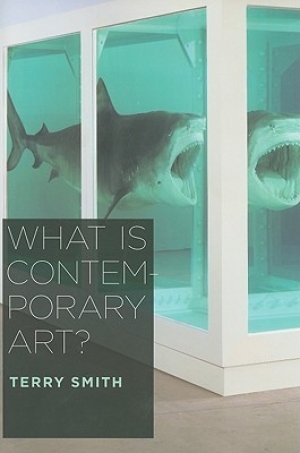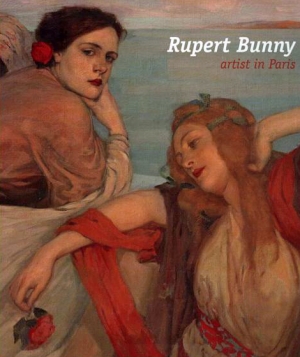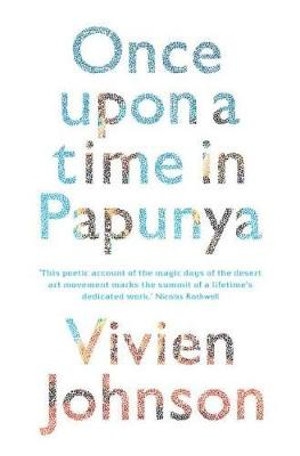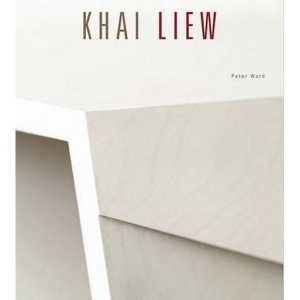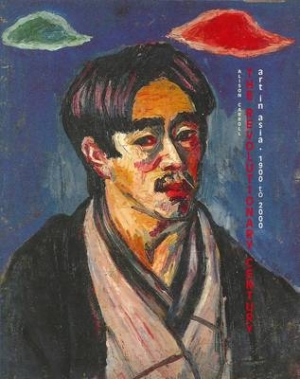Arts
John Thompson reviews 'Into the Light: 150 Years of Cultural Treasures at the University of Sydney' edited by David Ellis
With the centrepiece of its glorious Edmund Blacket building and its noble quadrangle, the University of Sydney is Australia’s oldest and grandest institution of higher learning – an adornment both to its city and to the nation since its foundation in 1852. Less well known, even in Sydney, is that the university is home to a remarkable accumulation of cultural and scientific treasures – some seven hundred thousand artefacts and objects – held within its museums and collections: the Nicholson and Macleay Museums, the University Art Gallery, the rare books collection of the Fisher Library and university archives, and numerous faculty-based research collections.
... (read more)Joanna Mendelssohn reviews 'What Is Contemporary Art?' by Terry Smith
At the beginning of his new book, Terry Smith writes that one of the fundamental qualities ‘of the contemporary: [is] its contemporaneousness’. He writes of the contemporary, contemporaries, contemporaneity, contemporaneous, noncontemporaries, cotemporality, cotemporalities, and cotemporal. It is a kind of tautological word game that goes down well in academic conferenceville, which is where some of this book first appeared. The function is to distinguish art of the last two decades, called ‘contemporary’, as distinct from that of earlier periods, labelled ‘postmodern’ and ‘modern’.
... (read more)Ian McLean reviews 'art + soul: A journey into the world of Aboriginal art' by Hetti Perkins
Pack the overnighter, put on the black dress – she wears it like a skin – kiss the kids, grab the wheel, don’t let go until back home. So Hetti Perkins begins ‘Home + Away’, the title of the first program of her recent television series, art + soul, and also the first chapter of the accompanying book.
... (read more)Daniel Thomas reviews 'Paths to Abstraction 1867–1917' edited by Terence Maloon
The Mondrians in Paths to Abstraction 1867–1917, Terence Maloon’s beautiful, refined exhibition held at the Art Gallery of New South Wales from June to September this year, and the Gauguins in Ron Radford’s more spectacular Masterpieces from Paris that closed at the National Gallery in April, were drawcards. We last saw a group of Mondrians in 1961; Gauguin had never been properly seen in Australia. The exhibitions and the related books together amounted to a superb and very up-to-date two-part lesson in the history of modernism.
... (read more)Jane Clark reviews 'Rupert Bunny: Artist in Paris' by Deborah Edwards, with Denise Mimmocchi, David Thomas and Anne Gérard
For those who saw the recent Rupert Bunny retrospective in Sydney, Melbourne, or Adelaide, where there were accompanying lecture programs, an informative audio guide, a lively children’s guide, and frilly knickers and parasols afterwards in the gallery shop, Rupert Bunny: Artist in Paris is a fine record of the exhibition. If you missed the show, this book provides a very good ‘virtual tour’, with works grouped both chronologically and thematically, all exhibits reproduced, plus full-page details of the artist’s fin-de-siècle beauties, decorative idylls and poetic mythological subjects. It is also a great deal more.
... (read more)Justin Clemens reviews 'A Beautiful Line: Italian Prints from Mantegna to Piranesi' by Maria Zagala
One of the notable things about living in a small country is that you can enjoy many first-rate second-rate things. Given the post-Renaissance domination of the visual arts by painting, prints have for a long time been driven into a supplementary role by artists, historians, and the market, and, as a result, have tended to be treated as minor works, curios, or historical illustrations. Because, moreover, Australia was a far-flung colony of the British Empire for much of its modern history, treated by its masters as ancillary to ‘the main game’, this situation mitigated against the acquisition of many exceptional paintings. Australians bought prints instead. State galleries acquired staggering print collections, from Dürer through to Rembrandt, Piranesi, Blake and Goya to the present. As its subtitle suggests, A Beautiful Line: Italian Prints from Mantegna to Piranesi showcases one important local collection, in Adelaide. Running the gamut from Renaissance to Rococo, the exhibition presents 135 prints ranging from the iconic to the obscure, culminating with works by such luminaries as Canaletto and Giambattista Tiepolo.
... (read more)Isobel Crombie reviews 'Frank Hurley’s Antarctica' by Helen Ennis
In the relatively small field of Australian photographic publishing, Frank Hurley has attracted more than his share of attention. The reasons are clear: in the contemporary world, bound by prohibitions, Hurley is a photographer–adventurer of heroic proportions.
... (read more)Ian McLean reviews 'Once Upon a Time in Papunya' by Vivien Johnson
The most widely known story of Australian art is about the beginnings of Papunya Tula. It has, says Vivien Johnson, been ‘retold so often that it almost has the force of Dreaming’. Its force is not just due to the story’s frequent telling, but also to the crime with which it begins, which was the making of prohibited images.
... (read more)An appropriately elegant publication, Khai Liew is the eleventh in the Wakefield Press series of monographs on South Australian artists, which was initiated by the South Australian Living Artists Festival (SALA) and is assisted by Arts SA.
... (read more)Peter Hill reviews 'The Revolutionary Century: Art in Asia 1900–2000' by Alison Carroll and 'Every 23 Days: 20 Years Touring Asia' edited by Sarah Bond, Alison Carroll and Claire Watson
If you were to tell me that a book had been written that covered a century of art in Asia, from 1900 to 2000, and that its geographic range moved from Japan to Pakistan and Indonesia, to Nepal, the Australian outback, and Cambodia, I would initially ask how many volumes it contained. That such a book exists, in a fairly slim volume, is tribute to the skills of its author, Alison Carroll. How has she done it?
... (read more)

